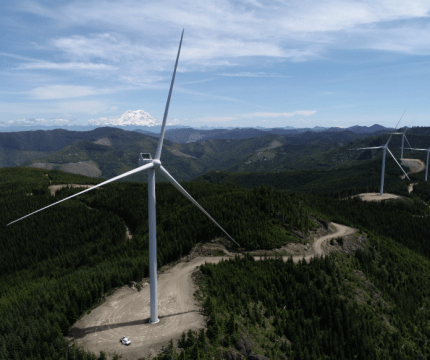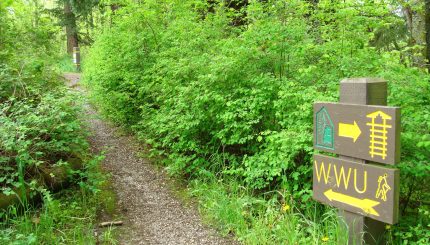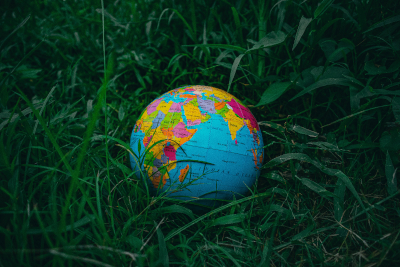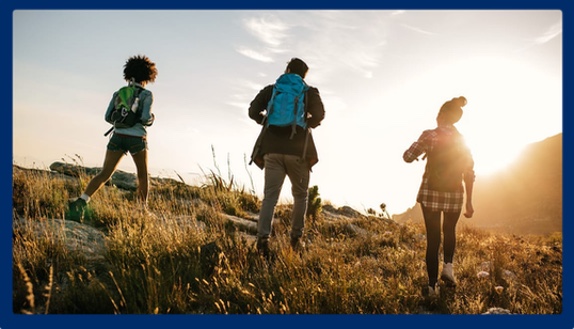Winter 2021: Energy
Take a picture of yourself going for a walk around Bellingham enjoying the sun, wind, and waves and send it to sustain@wwu.edu or tag us on social media @wwsustain!

Welcome back to Better Days! We are starting a new format where we will be focusing on a different sustainability theme each quarter. We will be posting new resources and ways to get involved with that theme every Monday, so make sure to keep a look out and visit our social media pages. The theme this quarter is Sustainable Energy Systems. When we know where our energy comes from and what alternative energy options we have, we can make choices that best benefit ourselves, our communities, and the planet. There are so many options for alternative energy sources here in the Pacific Northwest. Check out some of the options that are available to our community below:
SAP Connection: Built Environment Objective 2.5: Employ clean, renewable energy sources on- or off-campus to offset existing and new demands by 2030.
Wind Power
WWU has a new energy supplier: Skookumchuck Wind Facility! Western is now powered completely by wind and solar power. The initial push for 100% renewable energy first came from the Students for Renewable Energy club. With more backing from the Sustainability, Equity, & Justice Fund WWU has now become completely powered by renewable sources. This is part of PSE's initiative to include opportunities for clients to have their energy supplied by renewable sources.
Solar Power
Solar panels take light from the sun and turn it into energy, absorbing the light's photons and creating an electric field across the layers which allows the energy to flow. Believe it or not, solar panels are still a good alternate energy source option, even in the often-overcast Pacific Northwest! Visit the Department of Energy's website for more information.
Hydropower
Hydropower provides 69% of Washington state’s electricity. This is a great alternative energy source, but can also have some negative environmental effects. It is important to understand the pros and cons of this form of power. Visit the Nooksack Falls Hydroelectric Power Plant or the previous site of the Elwha Dam on a free weekend to see this power in action! You can learn more about hydroelectric power from the links in the resources provided.
Resources
Need a break on a sunny day? Send us a pictures of you visiting WWU’s campus to see the construction of the new net zero building! Send it to sustain@wwu.edu or tag us on social media @wwsustain!
One of the new construction projects on WWU's campus, Kaiser-Borsari Hall, is being built as a net-zero building. It is located on South campus near the Communications Building. Net Zero buildings are designed to reduce carbon emissions by using sustainable energy sources (what we covered last week) for power, and are also designed to offset the carbon they do use. Watch the short video from the EPA explaining what a Net Zero Building is (link in the resources list) and then go to Western’s campus to see the new one being built!
SAP Connection: Built Environment Objective 2.5: Employ clean, renewable energy sources on- or off-campus to offset existing and new demands by 2030.
Resources
Send us a picture of yourself at one of the previous power plants we mentioned, out in our community, or on a hike/walk!

Everything we do is connected. The energy that we consume comes from different places in our region and is connected to the whole ecosystem. When we reduce our carbon footprint and release less carbon dioxide into the air, the whole ecosystem becomes healthier and cleaner. Next time you are out in the community, think about the sustainable energy sources we talked about and the new rise of net zero buildings and how show us a better, cleaner alternative to using carbon dioxide. Thinking about our surrounding ecosystems, our connections to place and commitment to helping the environment in any way we can are ways to better ourselves and our actions to best treat our planet and each other with care.
SAP Connection: WWU’s Strategic Plan Goal #2: Western will advance a deeper understanding of and engagement with place.
Resources
Send us a picture of your dream destination! Tell us: how do you plan to travel there responsibly?

Travel choices can have huge impacts on the climate. There are ways that we can offset the carbon that we emit when travelling, and travelling habits that we can adopt to make our travel more sustainable. This can be on a local level such as taking the bus, riding your bike, carpooling when possible, or walking more often. It can also apply to long-distance car or air travel. Check out the website in our resource list for a few ideas and helpful guidelines for responsible and carbon-neutral long-distance travelling.
SAP Connection: Transportation Objective 3.3: Reduce impacts of regional university-related ground travel 10% annually over the next five years. Objective 4.2: Provide options to travelers for off-setting carbon by 2020.
Resources
Send us a picture of yourself-- we would love to feature those of you who have been following along with us this quarter!

Being conscious of our impacts on the climate via the energy that we use and the carbon we produce is so important. It is the first step in understanding how we can reduce our impacts, and allows us to consider the resources that are available to us that can help us do this very thing. Knowing the impacts we have on the planet allows us to in turn inform others about what they can do to reduce their impacts as well. If we were to all look into where our energy comes from, our carbon footprints, and find outlets to offset the carbon we do produce, we would drastically reduce general emissions. Be a part of the solution! You really are making a difference when you commit to sustainable habits, even if they seem small. Don't forget that you can always come back to this webpage to find resources.
SAP Connection: Letter from the President